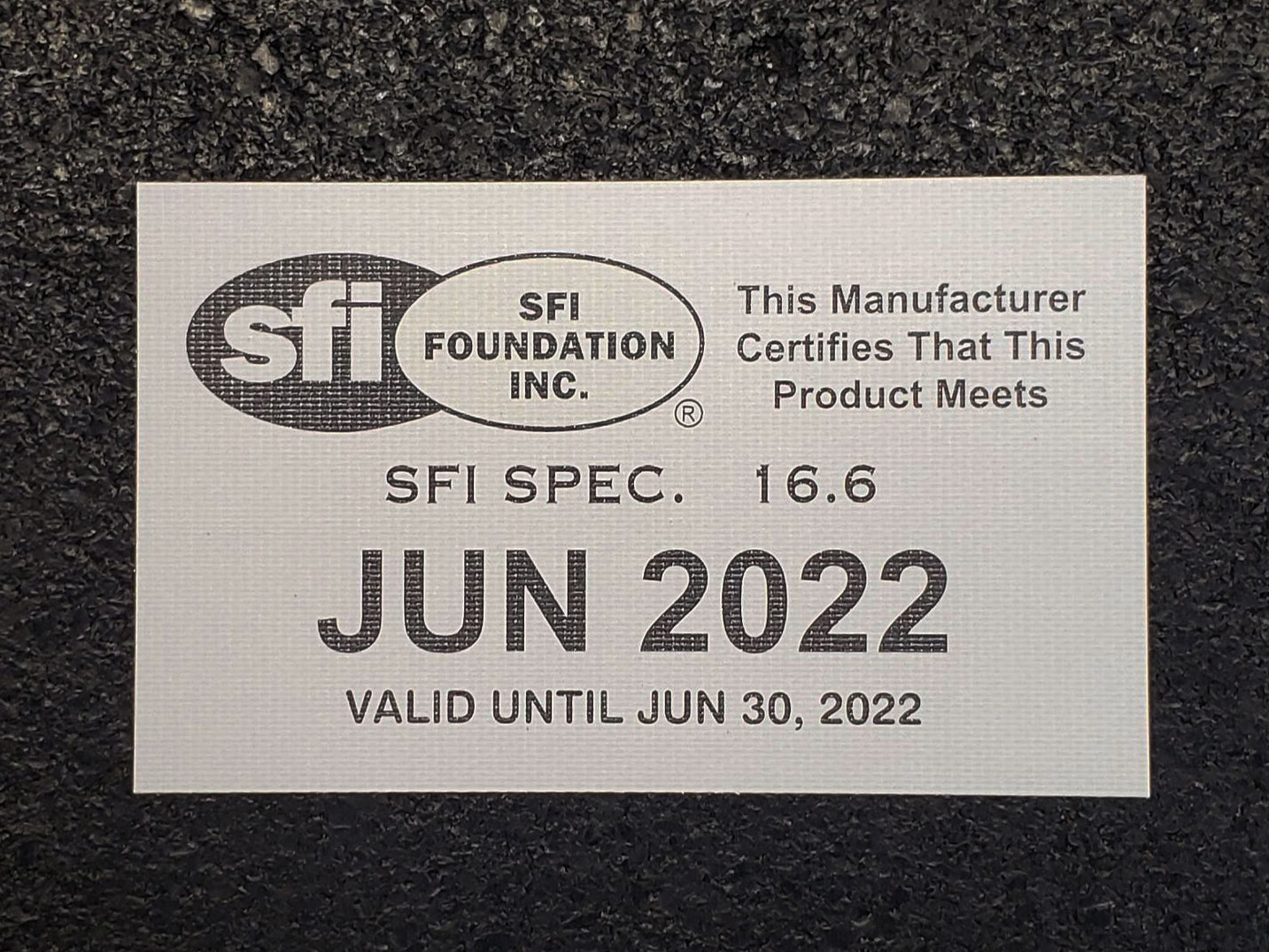SFI 16.6 Homologation
SFI 16.6 is the latest seat belt standard that went into effect in 2015. For the 2016 racing season, SFI 16.6 specification belts will be mandatory for NASCAR Sprint Cup and Xfinity series with the NASCAR Truck series mandating SFI 16.6 belts for the 2017 season. The new SFI 16.6 specification adds additional safety standards to the already very stringent SFI 16.5 standards. The biggest change required in SFI 16.6 versus SFI 16.5 is the addition of a mandatory Negative G belt, making all belts e
In addition to the required Negative G belt, SFI 16.6 adds an additional level of tensile strength testing of all individual components of a harness as well as the testing the mounting hardware, latching hardware and adjuster hardware for tensile strength. The tensile test requires that an individual belt component be able to withstand a test load without failure or slippage. The amount of load applied is determined by the body location and type of individual belt but all components must be capable of sustaining the load for 5 seconds, twice without failure. A single shoulder belt and its mounting hardware is tested to 3,500 lbs. of load, a double shoulder belt requires that the 3" body belt withstand 3,500 lbs. of load and the 2" over (HNR) belt withstand 2,500 lbs. Lap belts and mounting hardware must be able to hold 3,000 lbs. For single sub-straps such as those found in the Hybrid and Formula style belts, each sub-strap is loaded to 3,000 lbs. while for a T-bar style sub-strap the required load is 4,500 lbs with both sub-straps being tested at the same time. The Negative G belt is tested to 4,000 lbs. by itself whether it is standalone or part of a T-bar setup.
SCHROTH Racing worked tirelessly in the beginning of 2015 to ensure all of their style of belts passed SFI 16.6 in order to provide our customers with as many options as possible when required to run SFI 16.6. SCHROTH Racing has 2" and 3" lap belt configurations approved for SFI 16.6 in Profi, Hybrid and Formula style belts. Numerous different mounting brackets and hardware has been approved for SFI 16.6 to be used for shoulders, laps and sub-straps. SCHROTH Racing continues to offer custom sewn harnesses for professional drivers that want the utmost in comfort, weight savings and safety. Please contact HMS Motorsport directly for custom sewn options and configurations.
